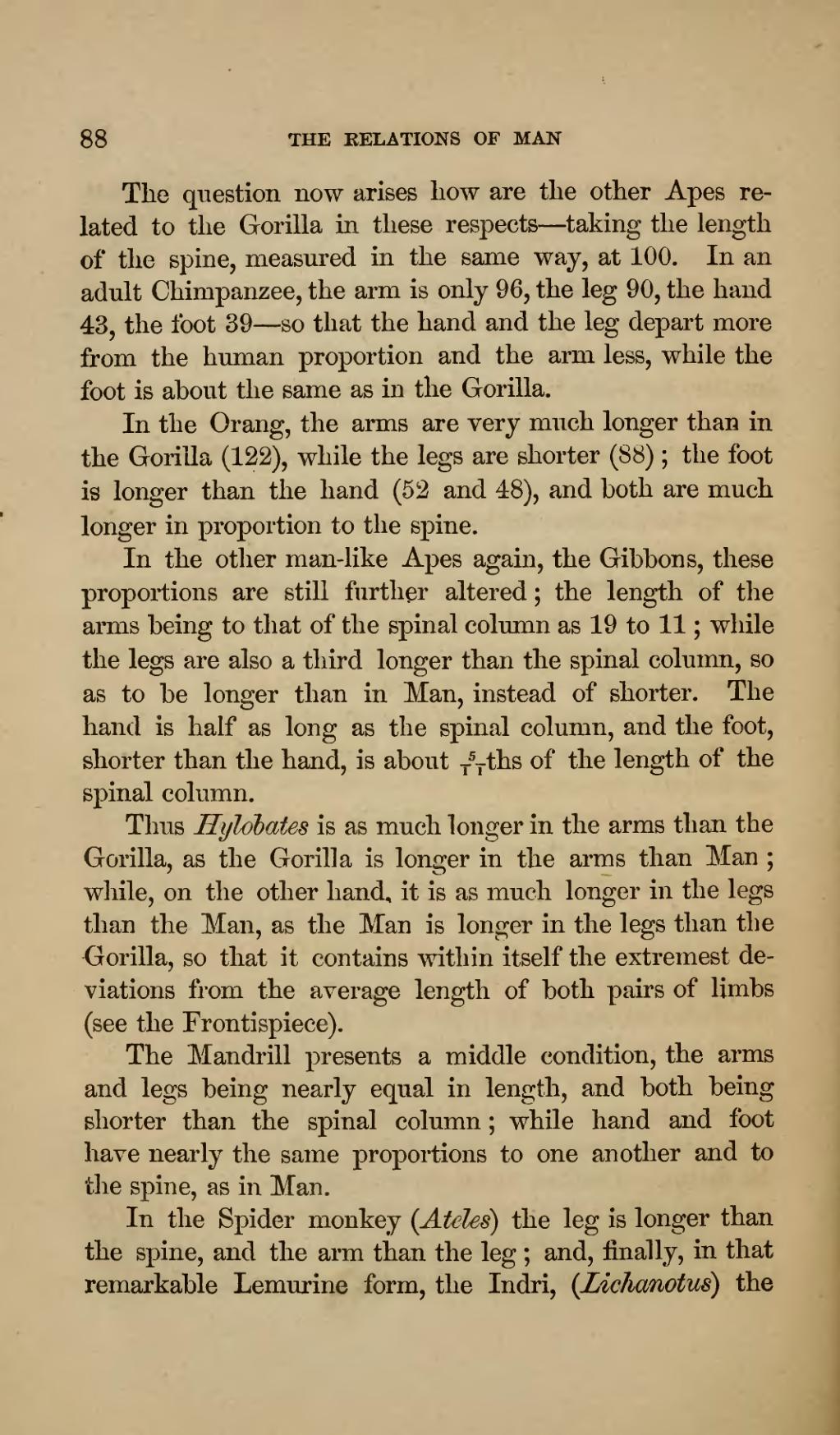The question now arises how are the other Apes related to the Gorilla in these respects—taking the length of the spine, measured in the same way, at 100. In an adult Chimpanzee, the arm is only 96, the leg 90, the hand 43, the foot 39—so that the hand and the leg depart more from the human proportion and the arm less, while the foot is about the same as in the Gorilla.
In the Orang, the arms are very much longer than in the Gorilla (122), while the legs are shorter (88); the foot is longer than the hand (52 and 48), and both are much longer in proportion to the spine.
In the other man-like Apes again, the Gibbons, these proportions are still further altered; the length of the arms being to that of the spinal column as 19 to 11; while the legs are also a third longer than the spinal column, so as to be longer than in Man, instead of shorter. The hand is half as long as the spinal column, and the foot, shorter than the hand, is about 511ths of the length of the spinal column.
Thus Hylobates is as much longer in the arms than the Gorilla, as the Gorilla is longer in the arms than Man; while, on the other hand, it is as much longer in the legs than the Man, as the Man is longer in the legs than the Gorilla, so that it contains within itself the extremest deviations from the average length of both pairs of limbs (see the Frontispiece).
The Mandrill presents a middle condition, the arms and legs being nearly equal in length, and both being shorter than the spinal column; while hand and foot have nearly the same proportions to one another and to the spine, as in Man.
In the Spider monkey (Ateles) the leg is longer than the spine, and the arm than the leg; and, finally, in that remarkable Lemurine form, the Indri, (Lichanotus) the
